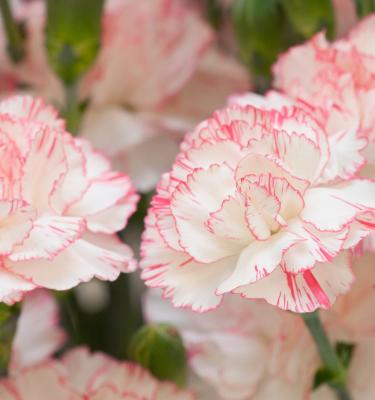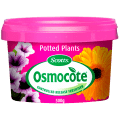

The Ultimate Guide to Growing Carnations
Carnations are grown for their beautifully fringed, fragrant blooms that make a long-lasting cut flower to enjoy in a vase. Flowering will begin in late spring and continue well into autumn.
Carnations look beautiful in cottage gardens, flowering borders and decorative pots. They prefer a full sun or light shade spot in a rich, free-draining soil and prefer to grow in temperate climates with warm summers and mild wet winters.
Some carnations can be grown as perennials (they’ll repeat flower for several years), while others are grown as annuals (they’ll die down at the end of autumn and should be replanted each year in spring) - check the label of the carnation you’re buying so you understand its lifecycle and how it can work in your garden.
5 top tips for growing carnations
- Choose a full sun or light shade spot, with a free draining soil or grow carnations in pots.
- Carnations prefer to grow in temperate / Mediterranean like climates with hot dry summers and mild wet winters. Most varieties are frost tolerant.
- Do not over water carnations as they don’t like wet feet and can easily rot
- Fertilise your carnations with Scotts Osmocote All Purpose Controlled Release Fertiliser or Scotts Osmocote Controlled Release Fertiliser: Potted Plants in spring and again in summer.
- Cut off dead flowers to encourage more blooms
Essential shopping list for growing carnations
- A potted carnation plant or seedlings
- Scotts Osmocote Compost Premium Soil Improver
- Scotts Osmocote Plus Organics All Purpose (including Natives) Plant Food & Soil Improver
- Garden shovel
- Mulch
- Defender Snail & Slug Pellets
- Defender Pyrethrum Insect Spray
- If growing in pots, you’ll need: Scotts Osmocote Premium Potting Mix + Scotts Osmocote Controlled Release Fertiliser: Potted Plants and a suitable pot or container
Growing carnations outdoors
Carnations prefer a full sun spot in a well drained soil, that’s been enriched with compost.
Prepare the site for planting carnations by mixing a little Scotts Osmocote Compost Premium Soil Improver and Scotts Osmocote Plus Organics All Purpose (including Natives) Plant Food & Soil Improver through the original soil - use a garden shovel to turn it through the top 10cm.
Dig the hole twice as wide as the original nursery pot and the same depth. Gently remove the carnation from the nursery pot and tease the roots lightly if they are compact. If you’re planting out a punnet filled with smaller carnation seedlings, gently seperate each seedling before planting.
Plant your carnation into the prepared soil at the recommended spacing and back fill around the rootball. Water in well and mulch to suppress weeds and retain moisture.
How to grow carnations in pots
Carnations can be grown in small to medium pots or planters (at least 20cm wide and deep) with good drainage.
Fill your pot or planter with Scotts Osmocote Premium Potting Mix. Gently remove the carnation from the nursery pot and tease the roots lightly if they are compact. If you’re planting multiple carnations in the pot, follow the spacing recommendations on the label - plant into the potting mix and back fill around the plants rootball. Water in well and top the soil with mulch to retain moisture.
Carnations care & fertilising
Carnations will benefit from Scotts Osmocote Compost Premium Soil Improver and Scotts Osmocote Plus Organics All Purpose (including Natives) Plant Food & Soil Improver mixed through the soil before planting and a dose of fertiliser in spring and summer.
Fertilise using Scotts Osmocote Plus Organics All Purpose (including Natives) Plant Food & Soil Improver for in-ground carnations or for potted carnations use Scotts Osmocote Controlled Release Fertiliser: Potted Plants.
Deadhead carnations during their flowering period to encourage more flowers. At the end of summer or early autumn cut your carnation plants back by half to encourage a flush of new growth the following spring.
Common carnation pests & diseases
Slugs and Snails can cause significant damage to carnation seedlings or plants. Protect young plants by setting beer traps (saucers filled with beer) or use Defender Snail & Slug Pellets.
Aphids and thrips are also known to infest carnations from time to time. If you notice these pest insects causing damage, spray your carnations thoroughly with Defender Pyrethrum Insect Spray as per the labels instructions.



